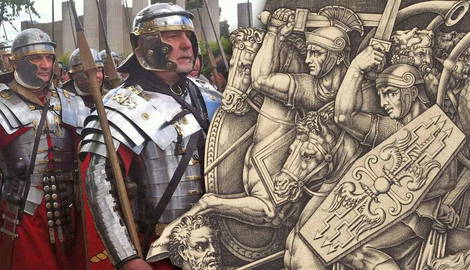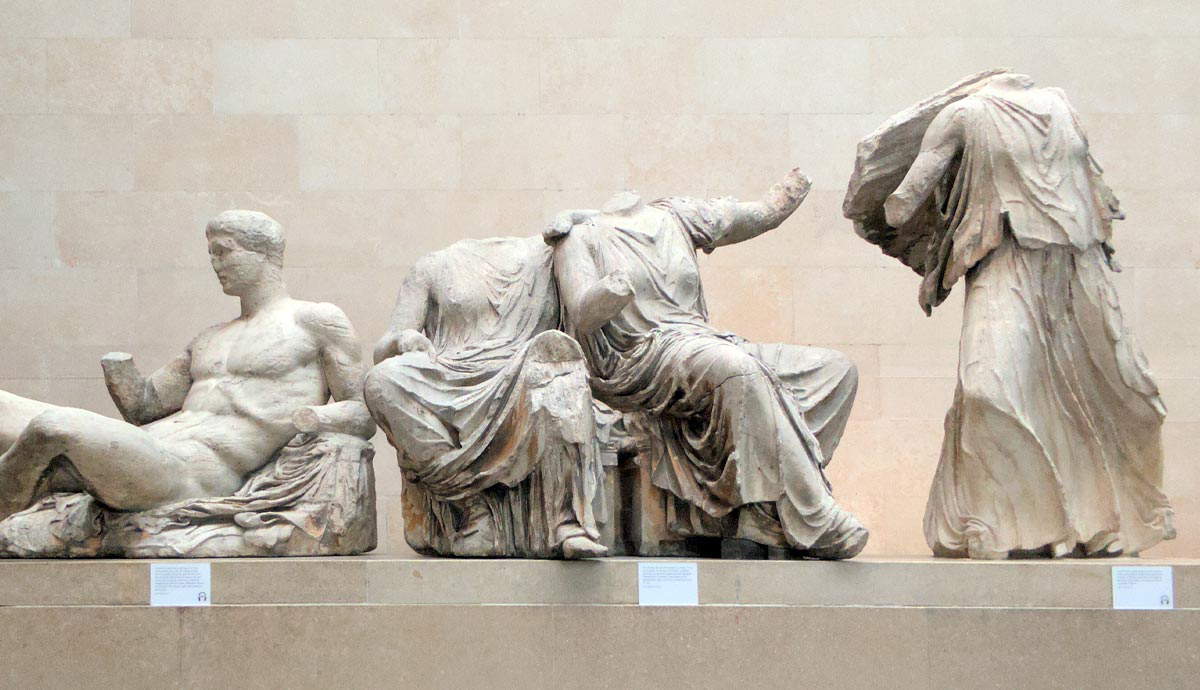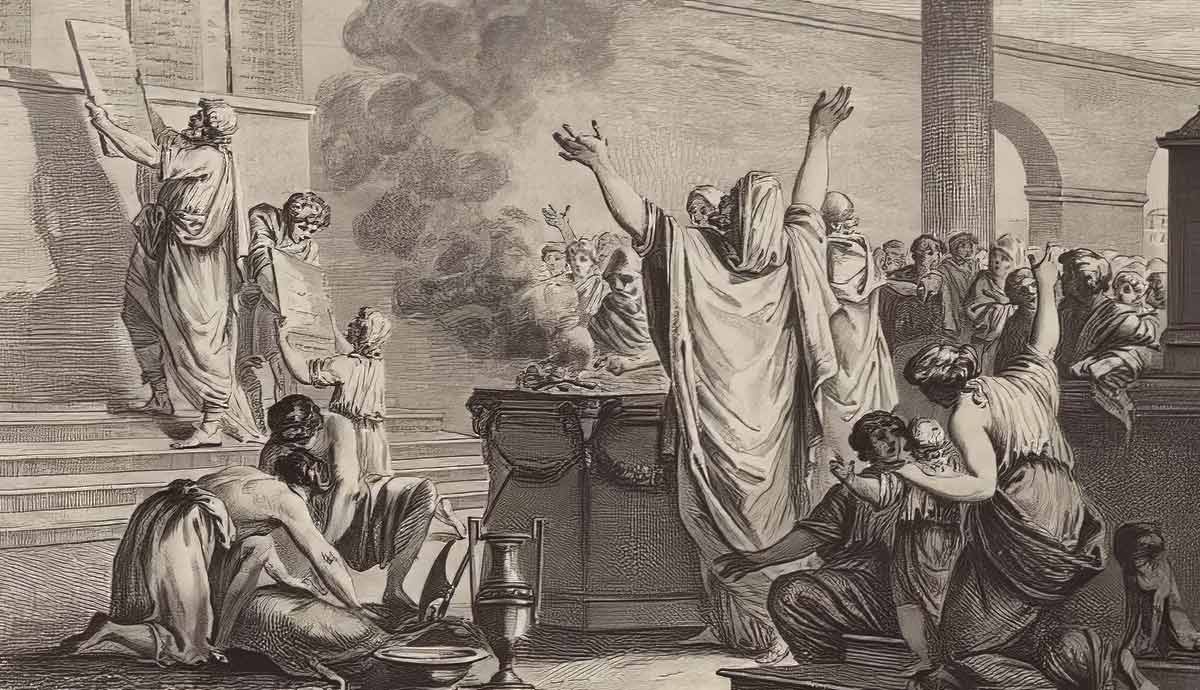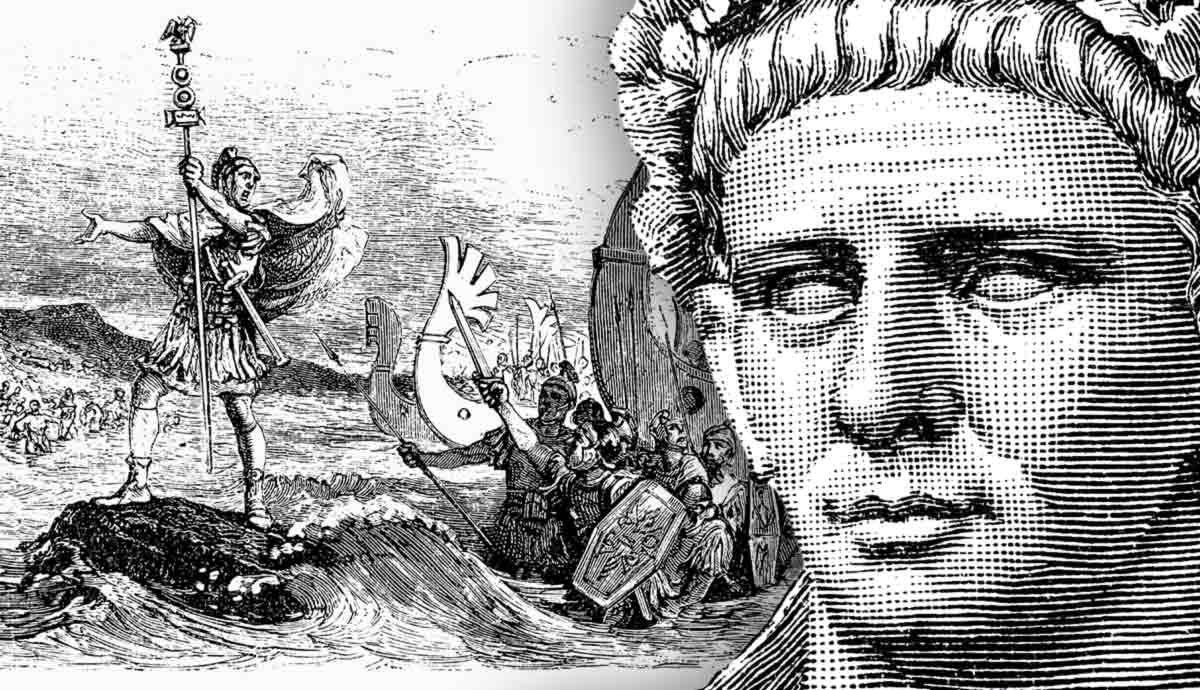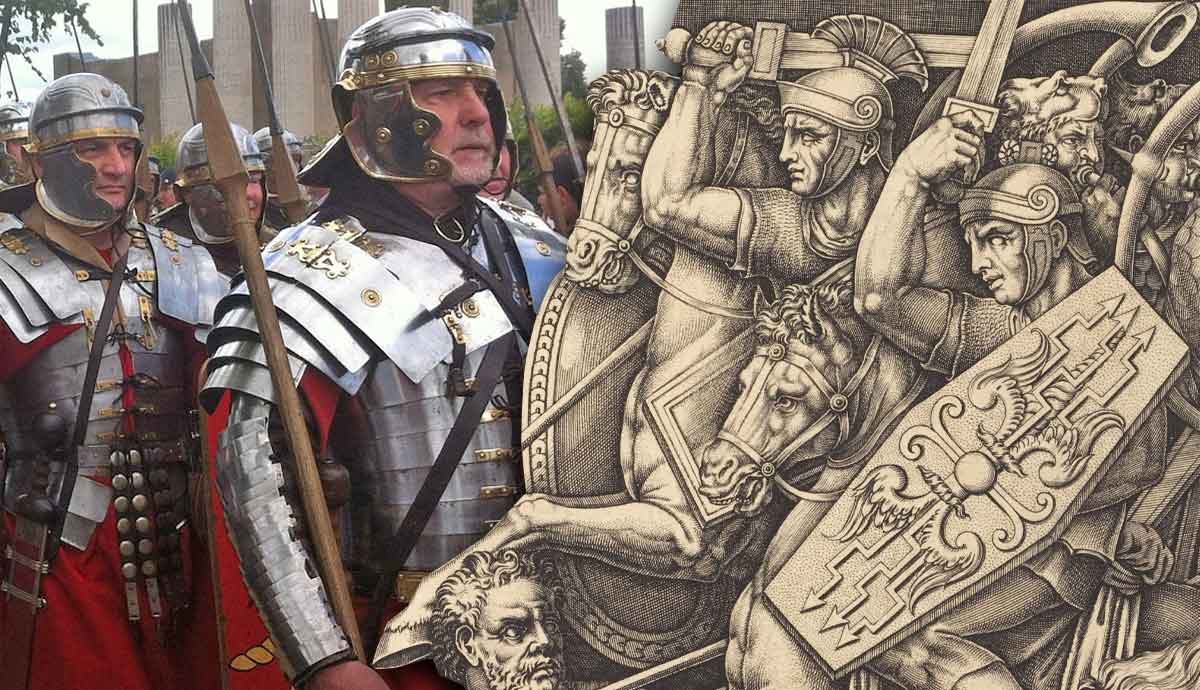
In the ancient world, the Roman armies struck fear into the hearts of their enemies. Well-trained and disciplined, at the core of the army was the legion, thousands of soldiers working in unison like a well-oiled machine.
Roman legionaries were iconic soldiers of the ancient world. Much of what made them so effective was the gear they took into battle. The weapons, armor, and equipment that characterized Roman soldiers set them apart from their numerous enemies.
Weapons
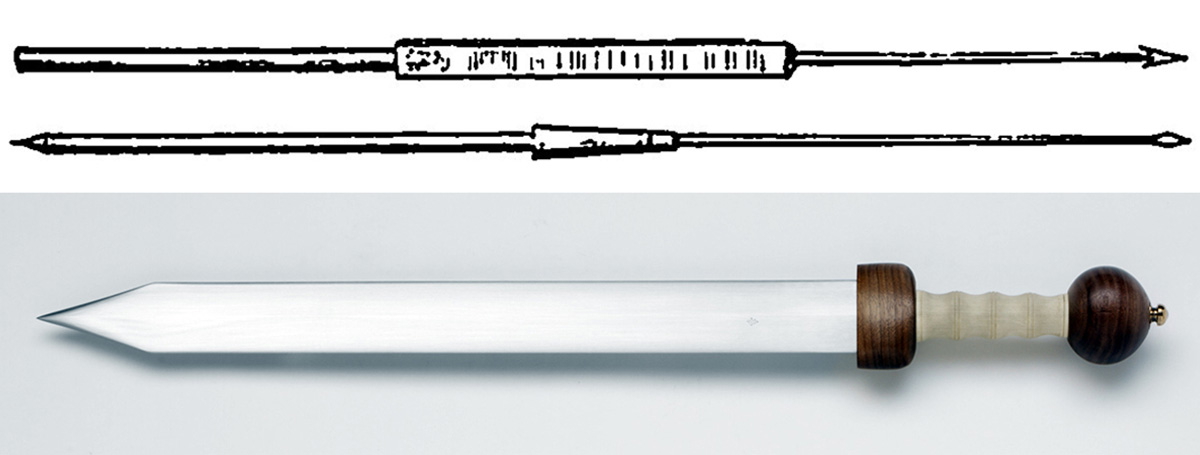
Throughout history, there are many examples of what Roman soldiers used in war. There were, however, some that stood out in the stereotypical image of a Roman legionary. The gladius was a short sword with a blade length of around 18–27 inches. Originally from Carthaginian Hispania, the gladius evolved to suit Roman needs and was employed on the battlefield from around 300 BCE to 300 CE. An interesting fact about these swords is that Roman soldiers often strapped them on the right side of their bodies. The weapon was short enough for a right-hand draw. In the later stages of the Roman Empire, swords became longer, and a lengthy version of the gladius, called a spatha, was wielded.
Another iconic weapon was the pilum. This javelin was designed for single use. The shank, leading to the hardened tip, was designed to misalign with the haft on impact, sticking out of enemy shields at awkward angles, and could rarely be thrown back at Roman soldiers. The shank was also thinner than the hardened tip, ensuring the pilum could penetrate further into the target. It was known to easily pierce shields and armor, and there is written evidence from Julius Caesar that the pilum could pin two overlapping shields together. Caesar also mentions that the shank would often bend. Rather than fight with their left arms impeded by shields that had become unwieldy, many enemy soldiers opted to rid themselves of their shields.
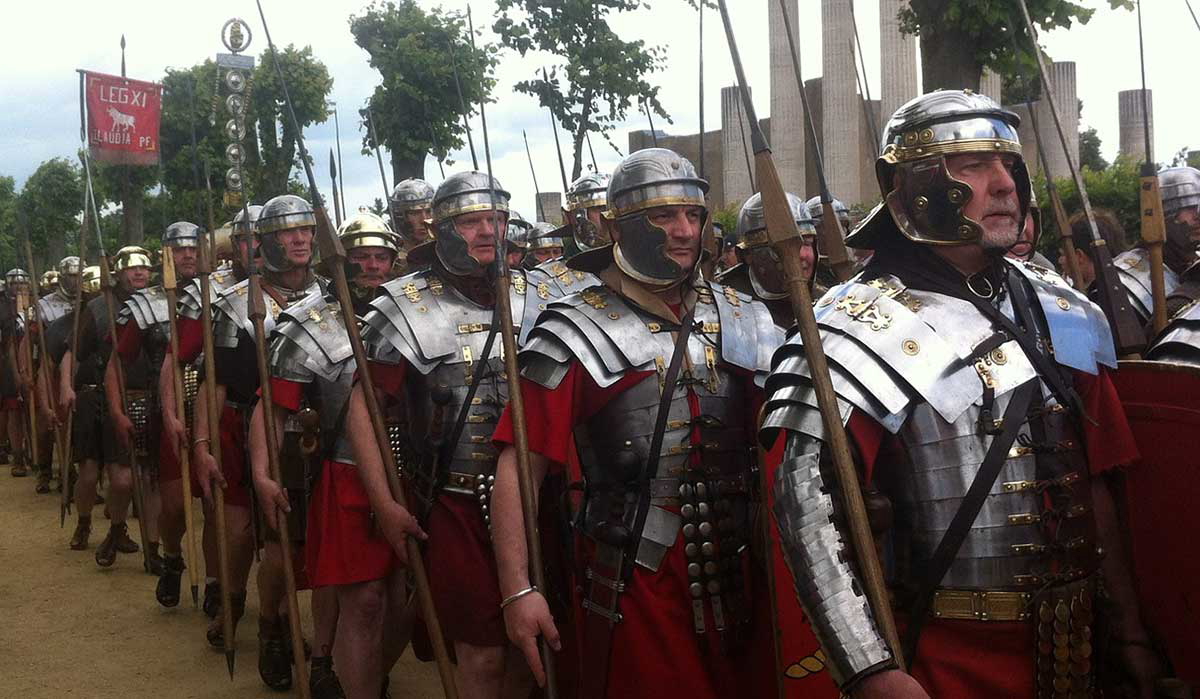
The arsenal of weapons, however, did not stop there. Relatively normal spears called hastae (sing. hasta) were also employed, along with a hefty dagger called a pugio. Late Roman soldiers also often carried plumbatae, lead throwing darts which could be carried easily and were attached to the back of the shield. With an effective range of almost 100 feet, plumbatae were a versatile option for ranged combat.
The Romans also made strides in the invention and employment of other weapons. Legionaries were certainly not famous for the use of bows, but bows were there, and they were used. Romans also used early forms of crossbows known as cheiroballistrae or manuballistae, not to be confused with the carroballista, which was a large crossbow often deployed in siege warfare, and one of many engines in the Roman siege arsenal.
The Scutum: A Highly Effective Shield
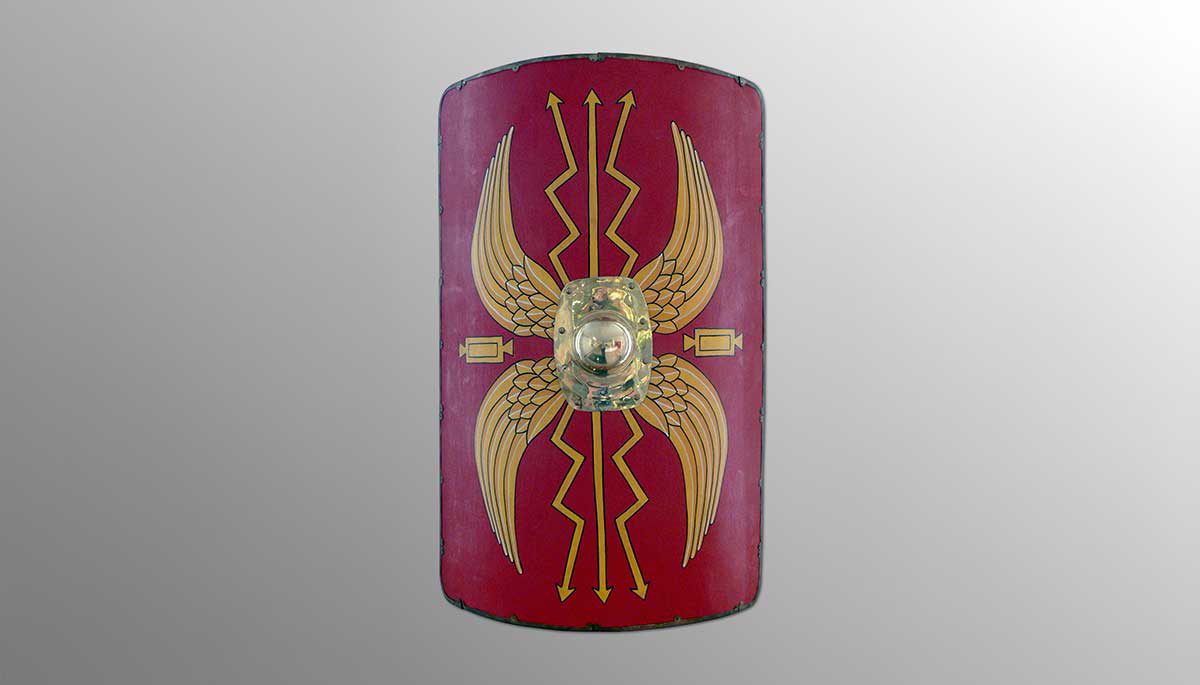
Roman legionaries are also often depicted with their trademark shields known as scuta (sing. scutum). These shields were large, rectangular, and semi-cylindrical, and were big enough for an entire legionary to hide behind. Of course, not all legions were standardized with the same equipment over the course of many centuries, and other shields were used. But it was the scutum which left an indelible mark on modern understandings of Roman soldiery.
The scutum generally weighed around 22 lbs (10 kg), but varied slightly through the ages. A famous example found at Dura-Europos in Syria is 41.5 inches (105.5 cm) tall and 16 inches (41 cm) wide. The convex design also meant that the shield was 12 inches (30 cm) deep, thus providing decent protection to the soldier’s flanks as well.
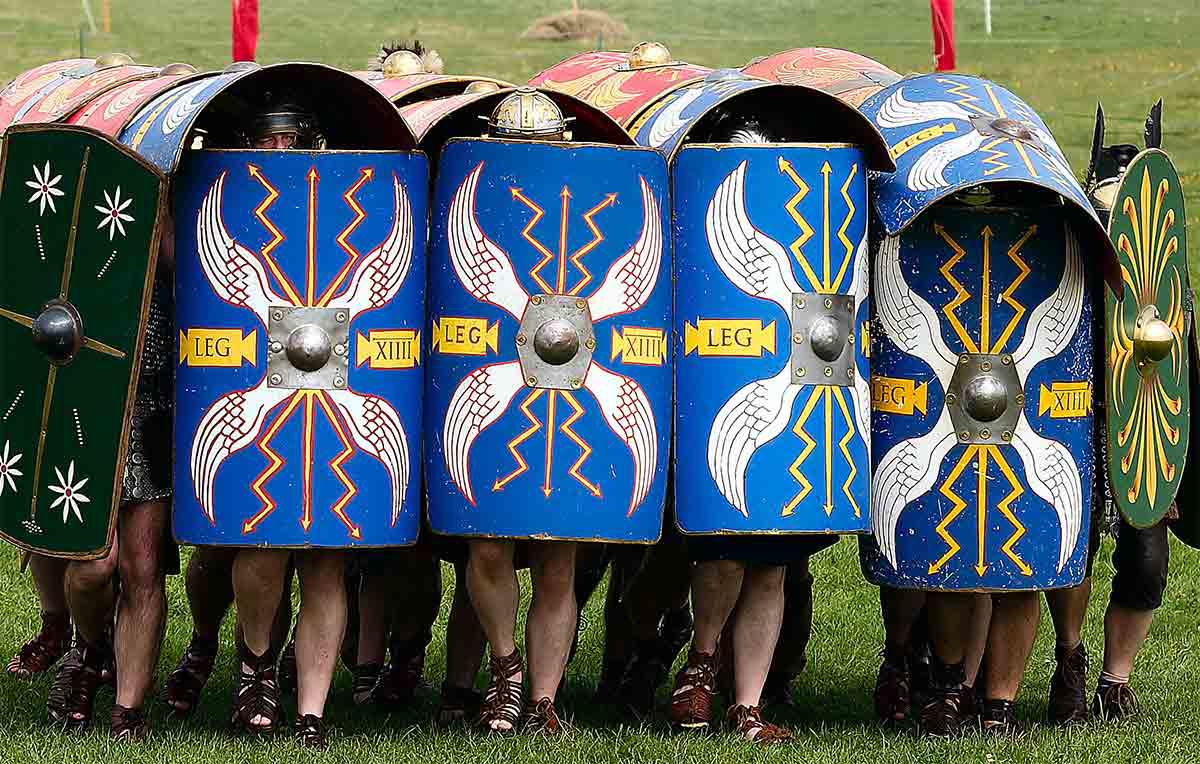
Scuta were designed to be used en masse, and hundreds of soldiers with scuta could present an almost impenetrable wall, even from above, as displayed in the testudo (tortoise) formation.
So effective was the design of the scutum that variations of it are still used today by riot police, along with some of the tactics employed by Roman legionaries, such as the testudo—a tactic unchanged for more than two millennia!
Many Different Kinds of Armor
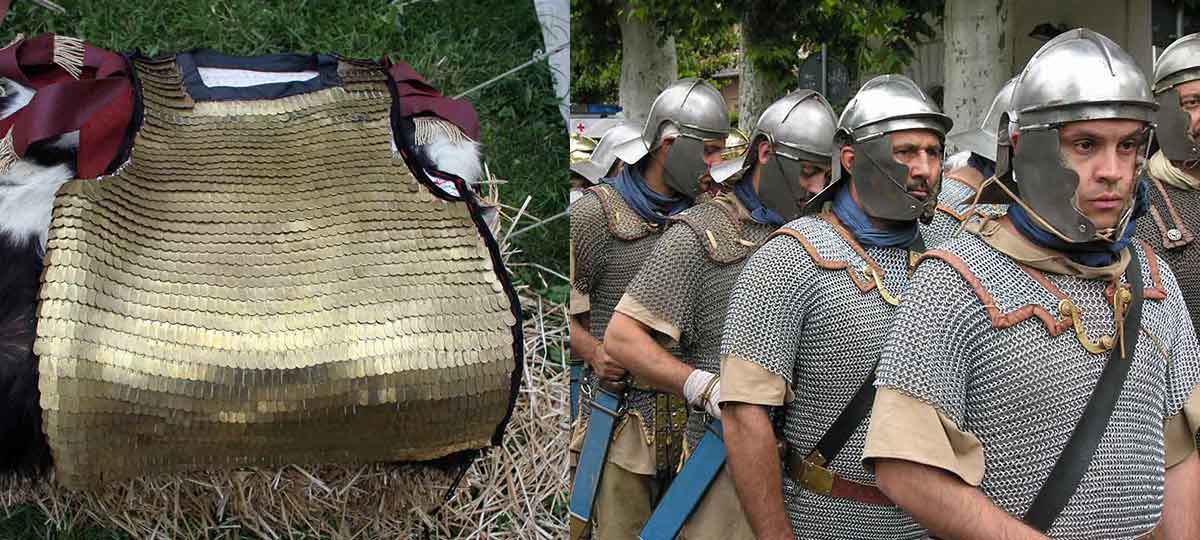
Roman soldiers are often depicted in their trademark armor of interlocking metal strips—an armor known as lorica segmentata. This armor was a type of banded armor that consisted of metal bands that ran around the torso of the wearer and were fastened together with leather straps.
Leather strips called pteruges hung from the waist and added extra protection to the upper legs, while allowing the wearer high mobility. The legions, however, existed for many centuries, and were dynamic and certainly not completely uniform. Many other kinds of armor were used.
Of great importance was lorica hamata—chainmail—which was used from the 3rd century BCE to the 4th century CE. Likely adapted from the Celts, who famously invented chainmail, the armor was used by both legionaries and auxiliaries. Centurions often wore lorica hamata as it could provide better body coverage and required very little maintenance. The constant friction of the rings against each other mitigated the formation of rust.
Lorica squamata—scale mail—also made common appearances, and was in use throughout almost all of Rome’s existence. It was especially popular among centurions, auxiliaries, and cavalry, and its popularity seemed to increase during the 1st and 2nd centuries CE. This armor consisted of small, interlocking scales made of copper alloy or iron, set into a backing of fabric or leather. Like chainmail, it was flexible and offered the wearer a great amount of protection while preserving mobility.
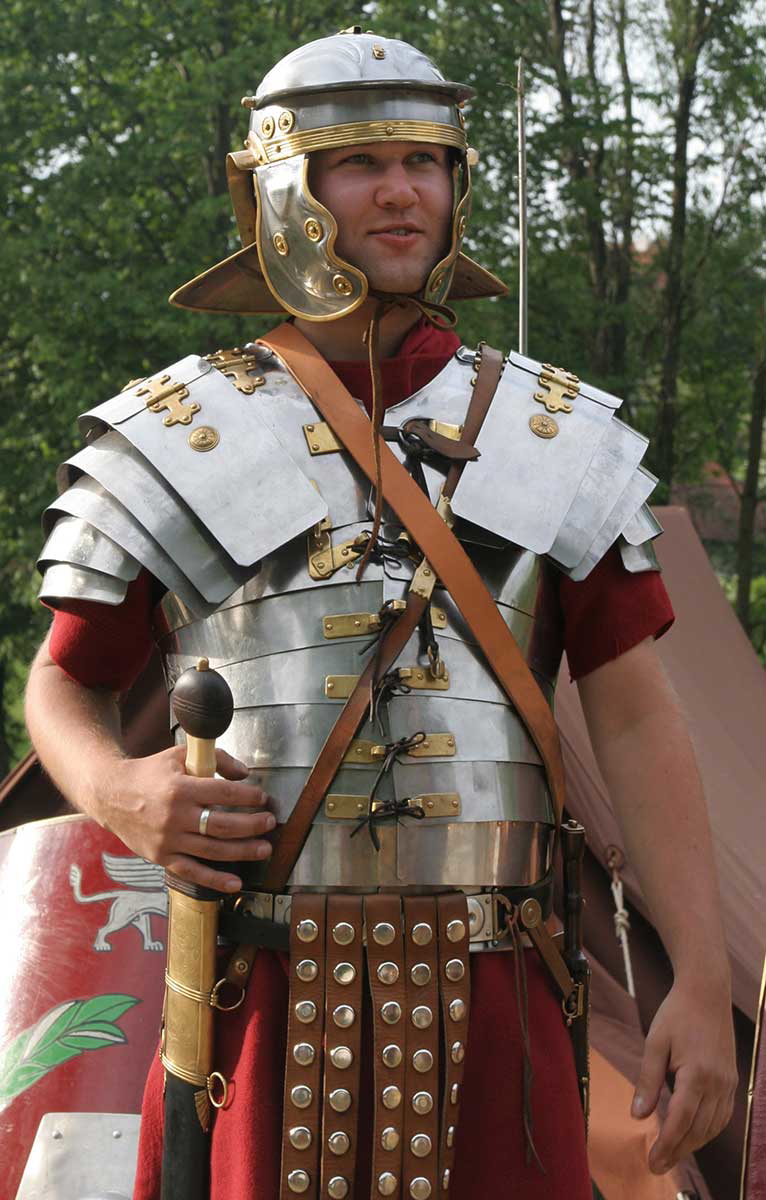
Another iconic trademark of the Roman legionary was the helmet. Referred to as the galea, these helmets had a range of differentiation over the centuries, and even from individual examples constructed at the same time. Complete standardization was difficult to achieve, but the helmets tended to have the same features, including a neck guard, cheek plates, and a deflector band across the front.
Clothing
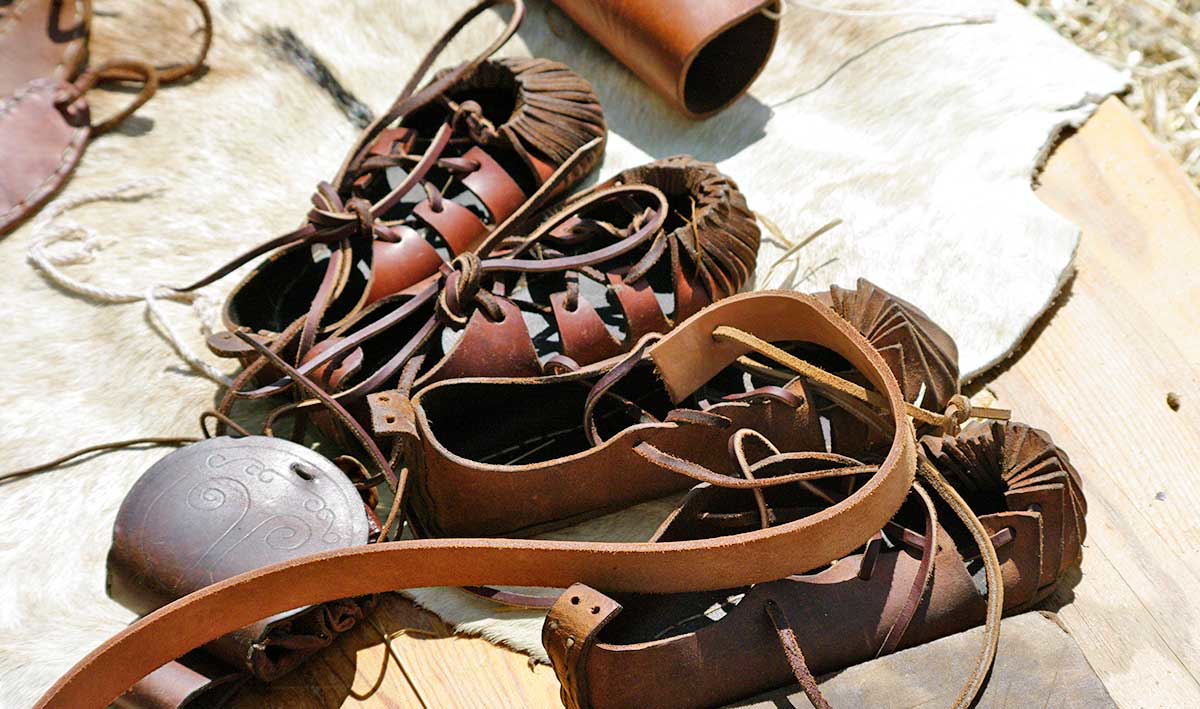
Apart from all the armor that covered their bodies, simple clothing was a necessity, if not for protection against the weather, then for common decency. Most of the body was covered in a simple tunic that extended from the shoulders to the knees and was fastened around the waist by a belt called a balteus.
A scarf called a focale was also used. Wrapped around the neck, the focale protected the soldier from the constant chafing from armor, especially lorica squamata and lorica hamata. On their feet, Roman soldiers wore caligae—sandal-boots, with hobnail reinforcements on the soles. In colder climates, Roman soldiers also wore woollen trousers called braccae.
And under it all, Roman soldiers wore subligaria—underpants.
Although the Romans strove for uniformity, it is notable that there were obvious variations due to rank, as well as the time period. Production also wasn’t always uniform. Clothes and armor could be sourced from a variety of places, and differences were common.
Survival Essentials
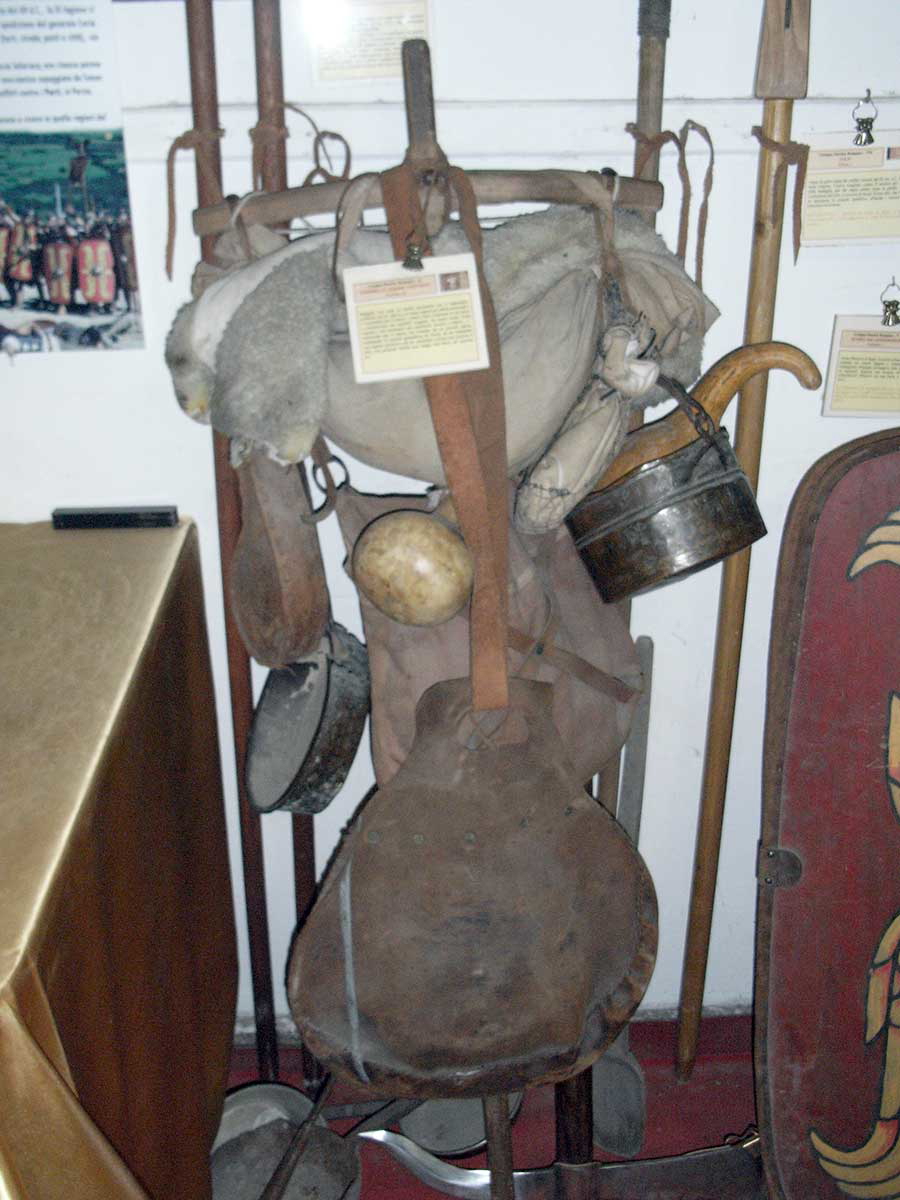
Traditionally, Roman soldiers carried essentials for survival, just as modern soldiers do today. These essentials were carried in a pack called a sarcina, which was attached to the end of a wooden pole called a furca, and carried over the shoulder.
The sarcina contained all the gear necessary for life on campaign, including a blanket, rope, various tools, food, water, and cooking equipment. Soldiers also carried entrenching tools and stakes for constructing a camp at the end of a long march.
Not everything, however, needed to be stored in a sarcina. Roman legions benefited from well-organized logistics, and baggage trains were able to supply armies on the march. The reliance on baggage trains was reduced around 107 BCE by the statesman Gaius Marius, who implemented reforms that required Roman legionaries to carry more of their own equipment. Nevertheless, the baggage trains were still necessary for carrying large amounts of grain, as well as tents, and large equipment like siege engines. Medical carts for transporting wounded soldiers were also a gruesome necessity.
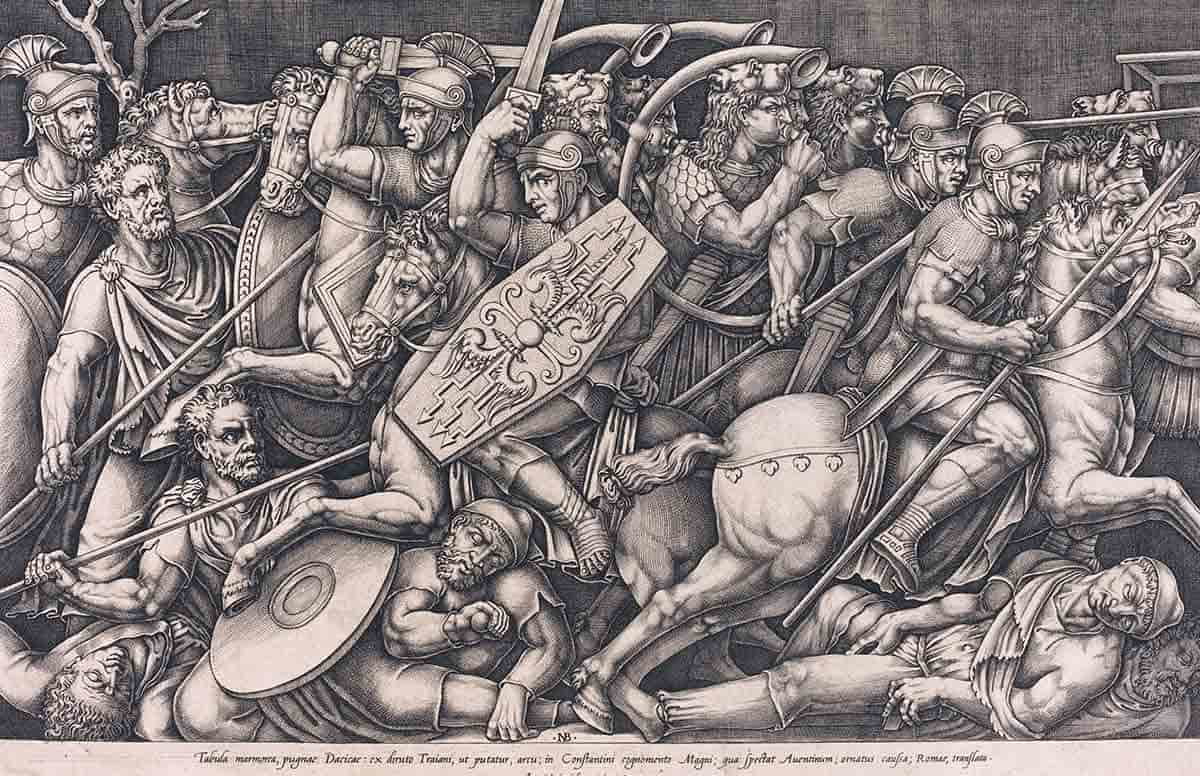
Roman legionaries were well-trained, versatile, and dynamic soldiers who were able to achieve what other soldiers could not. Their organizational abilities relied heavily on the equipment that was available. Achieving victory while on campaign was in no small part due to the variety of tools that legionaries had access to.
